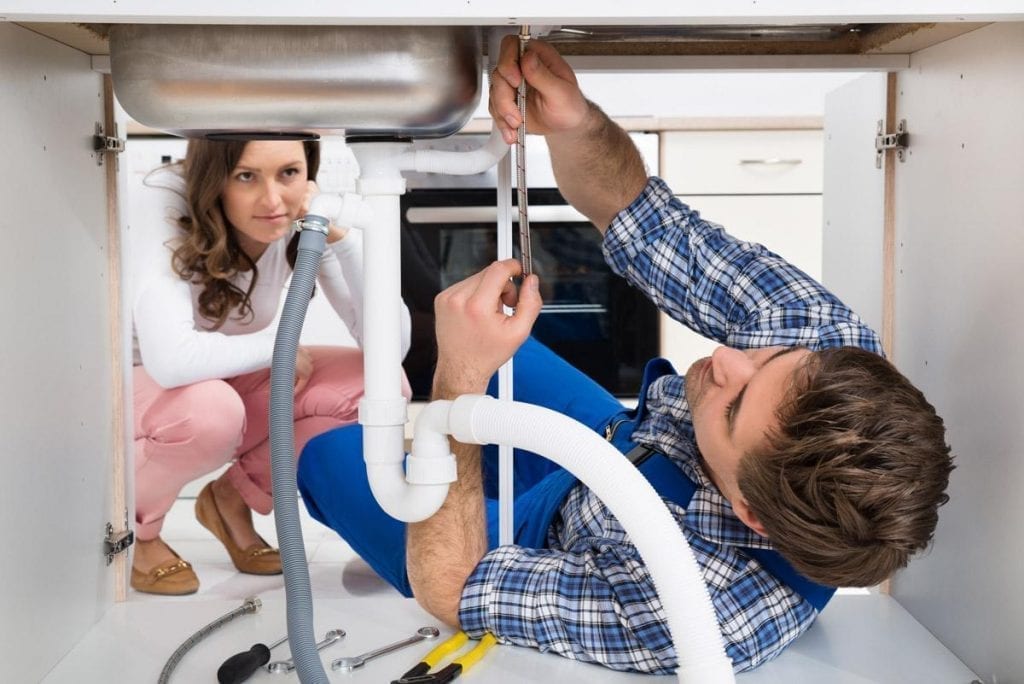Plumbing problems are some of the most common causes of water damage. Depending on whether a backup, broken pipe or leak is the culprit, these situations may involve clean or contaminated water and range in intensity. Water damage restoration and plumbing professionals may need to work together to identify the source and any likely contaminants in water to arrive at the right approach for mitigation and restoration.
Most instances of water damage call for speedy extraction and drying, though the equipment necessary may vary depending on the quantity of standing water present. Only incidents that involve contaminated gray water or black water necessitate cleaning and disinfection. Find out more about expert-recommended approaches for fixing plumbing problems and mitigating and restoring the damage.
Fix the Cause
Until a plumbing problem has been solved, there is little use in trying to start the cleaning and restoration process. It may be possible to limit the degree of damage by shutting off the water supply during a supply line leak and attempting to collect and remove as much water as possible.
Preventing the spread of contaminated water may also be useful for containing the damage, which may lessen the number of materials that require cleaning and disinfection or need to be torn out and replaced. Mitigation can only have a limited effect as long as a plumbing problem continues to cause any category of water damage.
Remove Water
A specialized pump or cleaning equipment such as a mop or wet vac can be helpful for extracting standing water left behind after a plumbing-related incident. Once again, until the source of water damage has stopped, these measures are only useful for limiting the spread or severity of the damage. Cleanup experts can recommend the right equipment to use in a flooded basement or for removing standing water elsewhere in a home.
Homeowners may not have access to commercial- or industrial-grade water damage restoration and plumbing equipment or possess the skill set needed to eliminate water as quickly as possible while mitigating primary and preventing secondary or structural damage.
Treat Contamination
A burst or leaky supply line releases clean water and causes Category One water damage. These incidents may not require cleaning or disinfection as long as the water is extracted and the area is dried within 24 to 48 hours. Several plumbing problems introduce contaminated water to structures. Any of the following incidents are likely to call for more extensive cleaning and disinfection:
- Appliance leak
- Flooding toilet
- Sewer backup
- Shower pan leak
Water that leaks out of dishwashers, washing machines, or shower pans may contain biohazards, chemicals, or microbes. Restoration professionals refer to water from these sources as gray water and incidents involving this degree of contamination as Category Two water damage. The most common sources of grossly contaminated black water are flooding toilets and sewer backups. Restoration professionals classify water that may contain solid waste as Category Three water damage.
Category Two and Category Three water damage both require disinfection. Depending on whether building materials have sustained damage, water damage cleanup specialists may use a preliminary round of disinfection prior to tearing out damaged materials followed by another treatment after ruined materials have been removed and the area has been cleaned.
Dry the Area
Drying is imperative for all categories of water damage. Even if a water-damaged area has been completely cleaned and disinfected, the risk of mold growth will remain elevated until the area is dry. A relative indoor humidity level in the 40% to 60% range should discourage mold from forming and multiplying.
Restoration professionals may also suggest using air movers, fans, or installing ventilation rated for the size of a room in cubic feet per minute. Temporary solutions can promote drying after one-time events, but adequate ventilation can help to prevent mold or mildew from becoming problems.
Property owners dealing with water damage caused by plumbing problems may not be sure which experts to contact first. United Water Restoration connects homeowners and commercial property owners and managers with water damage restoration and plumbing professionals who can resolve underlying issues and ensure that damage does not linger and become more severe. Placing a call as soon as a plumbing problem occurs may make it possible to eliminate primary damage within hours or days and prevent secondary damage.
We provide services in Ormond Beach, Florida, Jacksonville, Florida, Daytona Beach, Florida, Orlando, Florida, Tampa, Florida, Melbourne, Florida, and many other locations around Florida!





